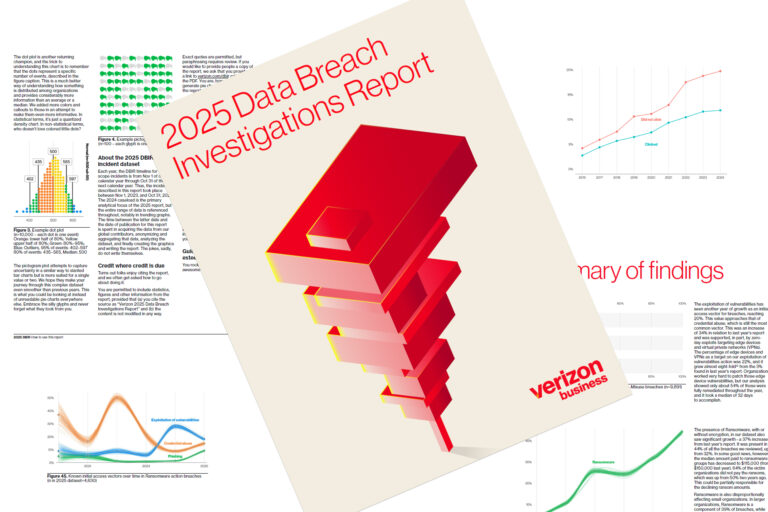Top Takeaways from the 2025 Data Breach Investigations Report
The 2025 Data Breach Investigations Report (DBIR) by Verizon delivers critical insights every cybers

The 2025 Data Breach Investigations Report (DBIR) by Verizon delivers critical insights every cybersecurity-minded executive must understand. This year’s findings have strategic implications for business and security leaders supporting technology-forward organizations, from evolving ransomware campaigns and edge device vulnerabilities to AI-powered phishing and third-party risks.
In particular, companies in regulated industries, private equity-backed firms, and high-growth tech providers must assess these trends not just tactically—but as part of broader governance and security maturity planning.
Ransomware was featured in 44% of breaches, representing a 37% year-over-year increase. While the median ransom dropped to $115,000, the impact on business operations has intensified, with 88% of smaller firms affected.
The exploitation of vulnerabilities rose by 34%, now seen in 20% of breaches. Edge devices and VPNs were particularly targeted, highlighting gaps in patch management and perimeter defense.
Breaches involving third-party vendors or service providers grew from 15% to 30%. Vendors continue to expand the threat surface for application providers and service delivery firms, whether via compromised credentials, exposed APIs, or direct system access.
Human involvement was a factor in 60% of breaches, primarily driven by phishing, misdelivery, and poor credential hygiene. Even advanced controls falter without consistent user behavior and a high level of security awareness.
22% of breaches involved stolen credentials. Notably, 46% of breached systems were non-managed devices—a clear sign of BYOD policy gaps and insufficient identity governance in hybrid environments.
Espionage-related breaches hit 17%, and 28% of state-backed incidents were financially motivated. State actors aren’t just stealing secrets—they’re increasingly monetizing access.
Threat actors are leveraging AI to generate more convincing phishing emails—synthetic content in malicious messages has doubled. Additionally, 15% of employees accessed GenAI platforms from work devices, often unsanctioned and without SSO or SAML controls.
API keys, cloud tokens, and JWTs continue to be exposed in public code repositories. Median remediation time on GitHub? 94 days. This provides a wide attack window for access brokers and ransomware groups.
Service interruptions from providers like CrowdStrike and CDK Global demonstrate that availability-related incidents can be as damaging as data breaches. Expect cyber insurance carriers to increasingly focus on business interruption risk.
30% of compromised systems were fully managed corporate devices, debunking the myth that endpoint management alone ensures protection. Endpoint security must integrate tightly with user access, behavior analytics, and Zero Trust policies.
The 2025 data breach investigations report confirms that today’s threats are automated, scalable, and increasingly beyond your perimeter. For security-conscious business leaders, the strategic mandate is clear:
It isn’t just about responding to threats; it’s about reshaping your security governance, aligning with audit requirements, and ensuring that your security investments match your business risk profile.
If your internal security leaders are stretched thin or lack strategic guidance, consider engaging external cybersecurity leadership to:
Now is the time to move from reactive defense to proactive resilience. Let this year’s DBIR be your benchmark—and your launchpad for a stronger security posture.

Brent Neal, the lead vCISO and principal advisor at Vanguard Technology Group, brings over 25 years of extensive experience in Security, IT, and GRC departments. With expertise in strategy, governance, program development, and compliance, Mr. Neal has paved the way for VTG’s comprehensive services. We specialize in providing holistic consulting, strategic planning, and tailored solutions to meet the unique security needs of various industries. Our expert guidance helps organizations establish a strong security posture, align initiatives with business objectives, and confidently navigate the evolving cybersecurity landscape.
Share our blog and spread cybersecurity knowledge!

The 2025 Data Breach Investigations Report (DBIR) by Verizon delivers critical insights every cybers
In 2023 alone, healthcare breaches exposed over 40 million patient records, underscoring the critica
Ransomware trends in 2024 reveal escalating threats, evolving attack methods, and critical lessons f
Over the past year, AI has transformed the technology and cybersecurity landscape, introducing urgen
Many companies face challenges in effectively prioritizing and maturing their security domains, such
One of the greatest cyber threats facing businesses today is ransomware, and many are uncertain abou

Security Leadership (Virtual CISO)
Program Development & Maturity
Compliance Services
Advisory & Consulting Services
© All Copyright 2023-2024 by Vanguard Technology Group